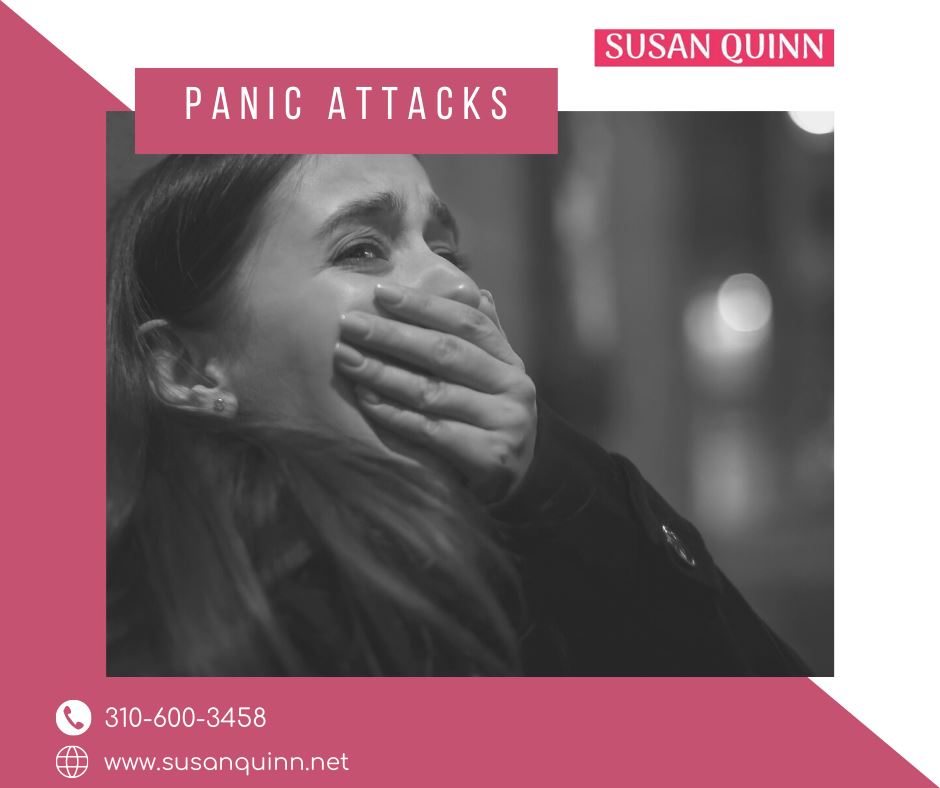People who have panic attacks may also suffer from Agoraphobia, which is a fear of being in public places, fear of having a panic attack in public, or fear of leaving their home. Some will go out a small distance from their home into an area that they consider their safety zone.
Panic attacks are sudden episodes of intense fear and discomfort that can last for several minutes. They can occur unexpectedly, without any apparent trigger, or in response to specific situations or stimuli that the person perceives as threatening or dangerous. Panic attacks are a symptom of an anxiety disorder called panic disorder, but they can also occur in other anxiety disorders, such as social anxiety disorder, generalized anxiety disorder, and post-traumatic stress disorder.
The symptoms of a panic attack can include:
- Rapid heart rate or palpitations
- Sweating
- Trembling or shaking
- Shortness of breath or a sensation of choking
- Chest pain or discomfort
- Nausea or stomach upset
- Dizziness or lightheadedness
- Feelings of unreality or detachment
- Fear of losing control or going crazy
- Fear of dying
If you are experiencing panic attacks, it’s important to seek professional help from a mental health professional, such as a therapist or psychiatrist. They can work with you to develop a treatment plan that may include medication, cognitive-behavioral therapy, or other types of therapy. Additionally, there are some self-help strategies that can help you manage panic attacks, such as deep breathing, progressive muscle relaxation, and mindfulness meditation.
Here are some additional things to keep in mind about panic attacks:
- Panic attacks can be very distressing and disruptive to daily life. They can make people avoid situations or activities that they fear might trigger another attack, which can lead to social isolation and further anxiety.
- Panic attacks can be caused by a variety of factors, including genetics, brain chemistry, life stressors, and learned behavior. Sometimes there is no clear trigger for a panic attack.
- Some people experience panic attacks in specific situations, such as when they are in a crowded space or giving a presentation. These situations can become associated with the panic attack, leading to avoidance behavior and further anxiety.
- Panic attacks can be mistaken for other medical conditions, such as heart attacks or asthma attacks. If you are experiencing chest pain or difficulty breathing, it’s important to seek medical attention to rule out any physical causes.
- Treatment for panic attacks usually involves a combination of therapy and medication. Cognitive-behavioral therapy (CBT) is a type of therapy that can be particularly effective for panic disorder. Medications such as antidepressants or benzodiazepines may also be used, depending on the individual’s needs.
- Lifestyle changes, such as regular exercise, healthy eating, and stress management techniques, can also be helpful in managing panic attacks.
Remember that panic attacks are treatable, and with the right support, many people are able to manage their symptoms and improve their quality of life. If you are experiencing panic attacks, don’t hesitate to reach out for help.
If you are struggling with panic attacks, let me help you get your panic attacks controlled.
Check my website by clicking www.susanquinn.net or give me a call at 310-600-3458 to discuss how I might be of help to you.



